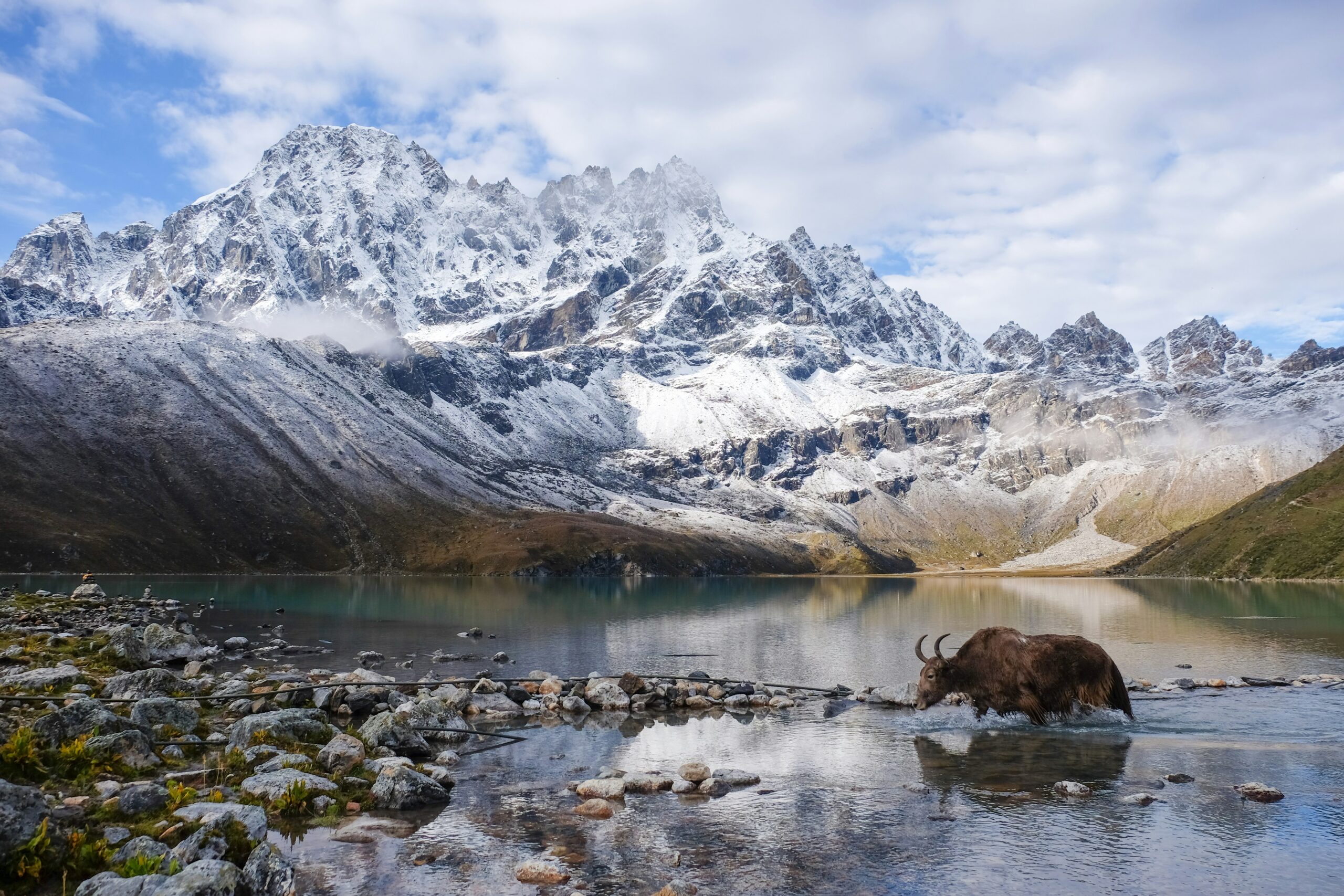
The Gokyo Lake trek is one of the most beautiful and peaceful treks in the Everest region of Nepal. It offers stunning views of the Himalayas, quiet trails, and the chance to see the famous turquoise lakes of Gokyo. Many trekkers choose this route as a less crowded alternative to the Everest Base Camp trek. But one common question is — What is the Gokyo Lake trek difficulty?
If you are planning this trek, it is important to understand how challenging it is. In this article, I will explain the level of difficulty, what makes it hard, and how you can prepare for it. I have been trekking in Nepal for many years, and the Gokyo route remains one of my favorites.
A Quick Look at the Gokyo Lake Trek
The Gokyo Lake trek usually takes about 10 to 14 days. It begins with a flight to Lukla and follows a trail through quiet Sherpa villages, dense forests, and open valleys. The highest point of the trek is Gokyo Ri (5,357 meters). From the top, you can enjoy one of the best views of Mount Everest, Cho Oyu, Lhotse, and Makalu.
The main highlight is the series of beautiful alpine lakes around Gokyo village. These lakes are calm, clear, and colorful, especially when the sunlight reflects off the water.
How Difficult Is the Gokyo Lake Trek?
The Gokyo Lake trek is moderate to difficult, depending on your fitness and experience. It is not a technical climb, so you do not need special climbing skills or equipment. However, it does require long walking days, high altitudes, and good stamina.
Here are the main factors that add to the difficulty:
1. High Altitude
One of the biggest challenges is the altitude. You will spend several days above 4,000 meters, and the air becomes thinner as you go higher. This can lead to altitude sickness, which causes headaches, tiredness, and nausea. The climb to Gokyo Ri is steep and takes time, especially because of the low oxygen levels.
To reduce this risk, you need to walk slowly, stay hydrated, and take enough rest days to acclimatize.
2. Long Walking Hours
Each day, you will walk for 5 to 7 hours on average. Some days may be longer, especially if the trail is steep or if you decide to cross Renjo La Pass. The trails go up and down regularly, which can be tiring for your legs and knees.
Being physically prepared will help you enjoy the trek more and reduce the risk of injury or exhaustion.
3. Cold Weather
The higher you go, the colder it gets, especially during the night and early morning. Even in the best trekking seasons (spring and autumn), the temperatures at Gokyo village can drop below freezing. Having warm clothes, a good sleeping bag, and proper gear is essential.
4. Remote Trails
Compared to the Everest Base Camp trail, Gokyo is more peaceful and less developed. There are fewer tea houses in some parts, and medical help is limited. If anything goes wrong, help may take time to arrive. That is why many trekkers choose to go with a guide or join a group.
How to Prepare for the Gokyo Lake Trek
-
Start training early. Hike, walk, or run regularly to build stamina.
-
Pack wisely. Bring warm layers, strong boots, and a good backpack.
-
Travel with a guide. This adds safety and support in remote areas.
-
Allow time to acclimatize. Do not rush the trek. Take breaks and rest days.
-
Stay positive and patient. Mental strength is just as important as physical fitness.
Final Thoughts
So, what is the Gokyo Lake trek difficulty really like? It is a challenging trek, especially because of the altitude and long walking days. But it is not impossible. With proper preparation and the right mindset, it is a very doable adventure. And the rewards are truly amazing — peaceful lakes, snow-covered peaks, and memories that will stay with you forever.
If you are ready for a Himalayan journey that is quiet, scenic, and full of charm, the Gokyo Lake trek is a great choice.